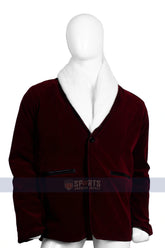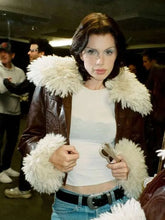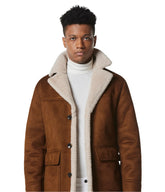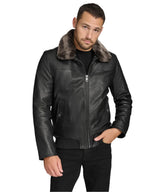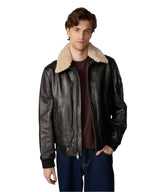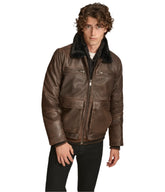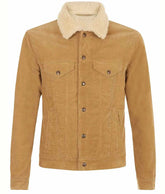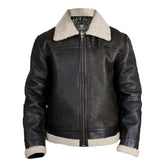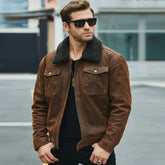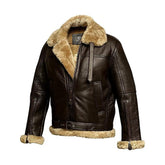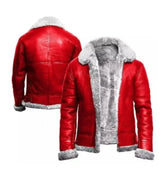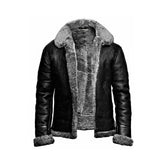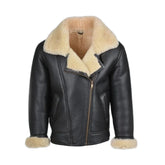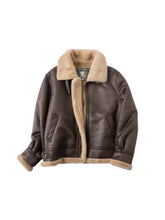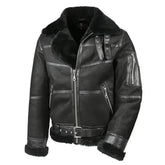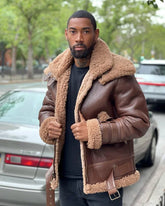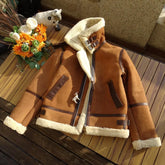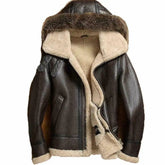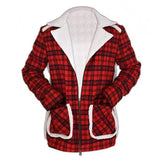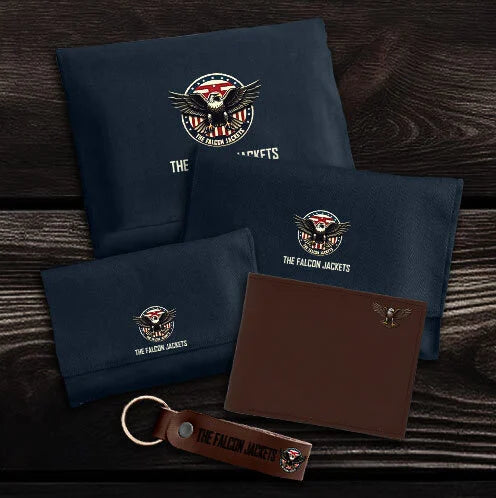You’re not just buying a jacket — you’re investing in decades of warmth, style, and swagger.
And if you’ve landed here, you already know: not all shearling jackets for men are built the same. Some look great for a season. Others? They become heirlooms. The kind you pass down. The kind strangers stop you to ask about. The kind that earns its place in your wardrobe — and your life.
Let’s cut through the noise. No fluff. No filler. Just what actually matters when you’re hunting for the real deal — or a damn good imitation that won’t break the bank.
First, let’s talk sheepskin vs. faux — because it changes everything
You’ve seen the tags. “Real shearling.” “Faux shearling.” “Sheepskin-lined.” “Synthetic sherpa.” It’s not marketing jargon — it’s the difference between a jacket that ages like whiskey and one that pills like cheap polyester.
Real talk: If you live where winter bites — think Yorkshire moors, Scottish Highlands, or even a damp London December — real shearling is non-negotiable. For city commutes or occasional wear? Faux does the job.
Styles that actually work — not just runway fluff
Forget “trendy.” Focus on timeless. These are the silhouettes that men keep reaching for — season after season.
-
Bomber / Aviator — The classic. Ribbed cuffs, snug fit. Perfect with dark denim and boots.
-
Trucker / Moto — Rugged collar, asymmetrical zips. Adds edge to a plain tee or hoodie.
-
Overcoat / Peacoat — Longer lines, structured shoulders. Ideal over suits or chunky knits.
-
Pilot / Flight Jacket — Roomy, utilitarian. Pockets for gloves, keys, that flask you pretend not to carry.
-
Cropped / Slim Fit — Urban, modern. Tucks neatly into high-waisted trousers. Not for layering.
-
Parka / Hooded — Practical for snow, sleet, or school runs. Hood adds function, not just fashion.
Pro tip: Vintage shearling jackets (especially 70s–90s military surplus) often outperform new mid-tier brands. Check eBay, Etsy, or local vintage dealers. Look for intact lining, no dry rot on leather, and intact stitching.
What “premium” really means — and what’s just markup
A £1,500 shearling jacket isn’t always better than a £400 one. Here’s where the money actually goes:
Leather Quality — Full-grain, vegetable-tanned lambskin or cowhide. Supple, not stiff. Smells earthy, not chemical.
Shearling Density — Wool should be dense, springy, at least 15–20mm thick. No bald patches.
Stitching & Hardware — Reinforced stress points. Brass or antique-finish zips (YKK is a good sign). No loose threads.
Lining & Structure — Interior should feel substantial, not flimsy. Armholes shouldn’t bind. Collar should sit naturally.
Origin Matters — Spain, Italy, Turkey, and Pakistan produce some of the world’s best shearling. Avoid “designed in LA, made in mystery factory.”
Skip the “designer” tag unless you care about logos. Often, you’re paying for branding, not craftsmanship.
How to spot a fake (or a flop) before you buy
Even if you’re not dropping four figures, protect your wallet:
-
Smell test — Real shearling has a faint, natural wool scent. Chemical or “perfumed” smell = red flag.
-
Touch test — Press the wool. It should bounce back. If it stays flat, it’s low-density or synthetic.
-
Edge check — Real shearling shows leather on one side, wool on the other — seamlessly fused. Faux often has a fabric backing.
-
Weight feel — Lightweight? Probably faux or thin shearling. Real stuff has heft — comforting, not cumbersome.
-
Return policy — If they won’t take it back within 30 days, walk away. Even luxury brands offer returns.
Care isn’t optional — it’s part of the deal
Shearling isn’t “wash and wear.” Treat it right, and it’ll outlive your phone, your car, maybe your relationship.
-
Never machine wash. Spot clean with damp cloth + mild wool detergent.
-
Air dry only — no radiators, no hairdryers. Hang in shade, stuff sleeves with towels to hold shape.
-
Brush wool gently — use a pet slicker brush (yes, the dog kind) to lift matted fibers.
-
Store on wide hanger — never fold. Use breathable garment bag, not plastic.
-
Waterproof? Light spray with leather protector (like Nikwax). Don’t soak it. Rain is fine — downpours? Not so much.
Fun fact: A well-maintained shearling jacket develops a patina — the leather darkens, the wool softens. It becomes uniquely yours.
FAQs — Straight answers, no spin
-
Q: Are shearling jackets warm enough for UK winters?
A: Absolutely — if it’s real shearling. The wool traps body heat, and the leather blocks wind. Layer a thin merino underneath for sub-zero days. Faux? Only for mild chills or short bursts outdoors.
-
Q: Can I wear a shearling jacket in the rain?
A: Light rain? Fine. Heavy downpour? Not ideal. Real shearling can handle moisture (wool wicks it), but prolonged soaking damages the leather. Always air dry thoroughly after.
-
Q: How do I know if it’s real shearling?
A: Flip the collar or check seams. Real shearling = leather on one side, dense wool on the other, fused at the base. Synthetic has a fabric or mesh backing. Price is also a clue — under £150? Likely faux.
-
Q: Are shearling jackets still in style?
A: They never went out. From Steve McQueen to Harry Styles, shearling’s a forever staple. It’s not “in” — it’s essential. Rotate it with your pea coat and parka. Always relevant.
-
Q: What do I wear under a shearling jacket?
A: Keep it simple. Crewneck sweater, henley, or thermal tee. Avoid bulky hoodies — they ruin the drape. Bottoms? Dark denim, chinos, or even tailored trousers. Boots or clean sneakers. Done.
Final word: Buy once. Wear forever.
This isn’t fast fashion. A proper men’s shearling jacket — real or well-made faux — is a commitment. It’ll see you through job interviews, road trips, first dates, and midlife crises. It’ll smell like campfires, airport terminals, and your cologne. It’ll get better with time.
So don’t chase discounts. Don’t fall for influencer hype. Find the one that fits your frame, your climate, your life. Then wear it like it’s yours — because it will be. For years. Maybe decades.
That’s the power of shearling. Not just a jacket. A legacy.


